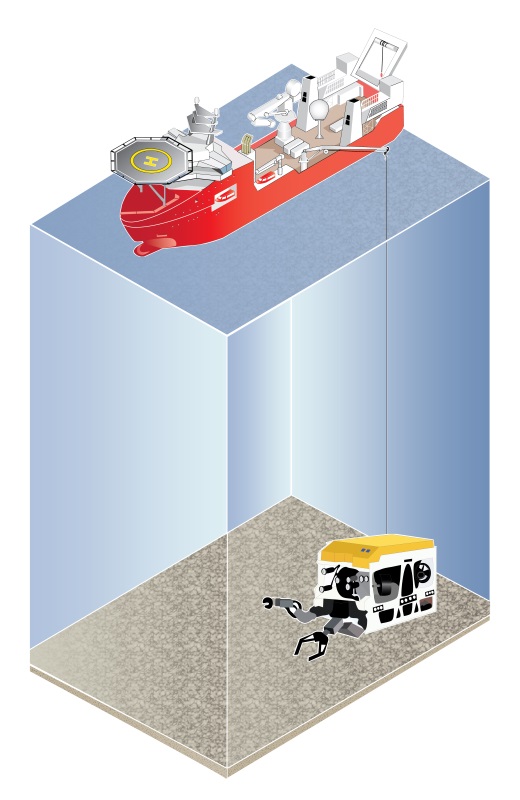
Subsea remotely operated vehicles (ROVs) are interesting devices used by a wide variety of industries for exploring, surveying and inspecting conditions and devices in deep water. Packed with a range of cameras and sensors, designed to withstand extreme pressures and temperatures, ROVs help with the installation and maintenance of oil and gas rigs, subsea pipes and cables, renewable energy installations such as wind turbines and more. They are also used for exploration – discovering new species, observing sea life and conservation efforts and even salvage and recovery of sunken ships.
It’s fair to say these relatively unknown heroes of the sea help engineers and scientists perform some important work, and therefore require robust and trustworthy hardware to operate. Possibly one of the most important parts of the ROV is not actually a part of the ROV! The umbilical is a cable the stretches from top side to the submersible and provides crucial power and communications to and from the device and it’s operator.
Umbilical cables include metallic cores for power and fibre optic cores for two way data transmission and video/audio capture from the ROV. Fibre optic cables are useful as they are not susceptible to interference and attenuation due to length and temperature like traditional copper data cables and can therefore deliver consistent, reliable and real time communications.
Advance supply a range of specialist SFP modules for these subsea vehicles, depending on specific application. These include Bi-Directional modules for single fibre applications and CWDM (Course Wavelength-Division Multiplexing) for multi-channel applications, at the most common Gigabit and 2.5G data rates. Rated for extreme temperatures of -40°C, Advance SFP modules continue working in the most challenging of environments ensuring ROV operators can maximise their productivity.
You can contact Advance Technology for more information and to discuss your requirements including custom wavelength solutions.
